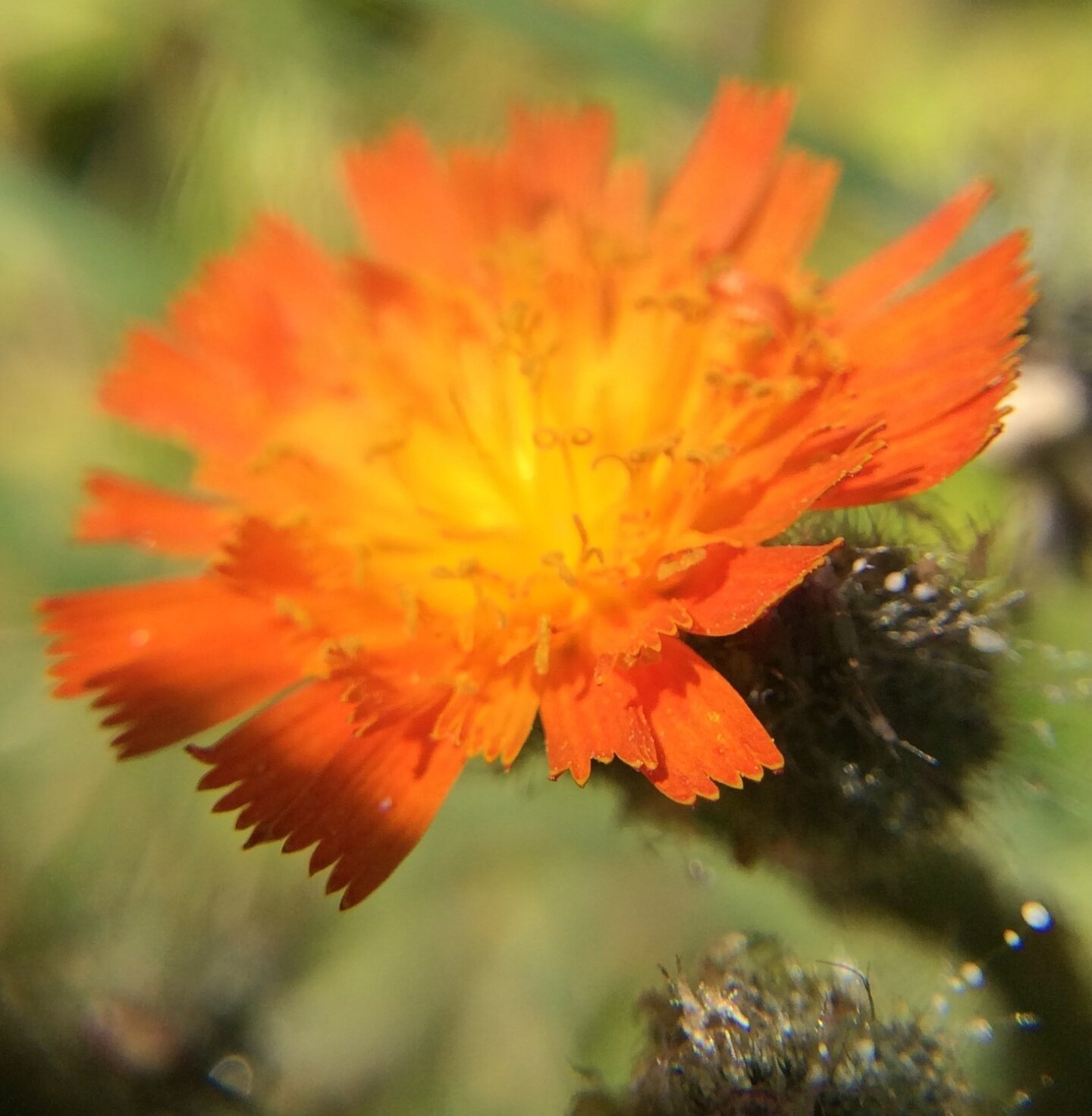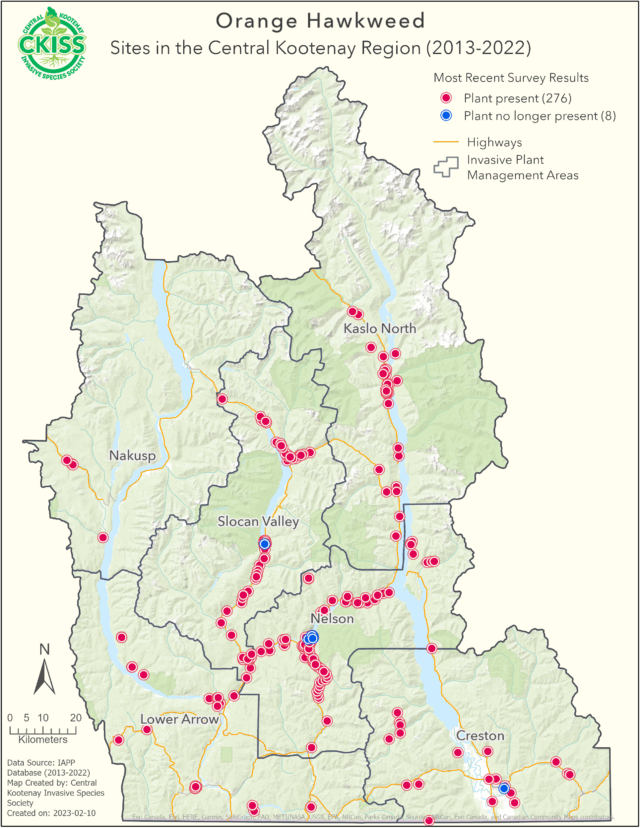Hieracium aurantiacum
Description
- Bright orange, orange-red, or yellow flowers with several flower heads growing in clusters
- Stems are usually single, unbranched and leafless
- A rosette of leaves is present at the base of the plant (native hawkweeds will have true leaves growing all the way up their stems)
- Stems are covered in black hairs
- 0.3 – 1.2 m tall
Consequences of invasion
- Invasive hawkeed species can replace native vegetation in open, undisturbed natural areas
- Reduces forage and threatens biodiversity
- Outcompetes forage plants in hay fields and pastures
Status in the CKISS region
- Orange hawkweed has become widespread in the CKISS region, and its management priority is classified as Strategic Control on the CKISS Annual Priority List.
- While it is not realistic to eradicate this species at the landscape level, this species may be treated at high priority sites (e.g. wildlife habitat, corridors of spread, adjacent to agricultural land, restoration sites, etc.) based on specific land management objectives.
- To learn more about how CKISS classifies and manages invasive species, see our Invasive Species Priority Lists page.
Integrated pest management options
- For small infestations, dig out rosettes and their shallow roots and dispose of in clear plastic bags for free
- Can reproduce vegetatively through above-ground runners, and underground roots, so take care to securely remove all of these parts.
- Mowing removes flower stems and may prevent seed set, but it should be used with caution as it encourages vegetative spread
- Large infestations may be treated with a high nitrogen fertilizer
- Minimize soil disturbance and promptly revegetate disturbed areas
- Become Plantwise and learn about Grow Me Instead


